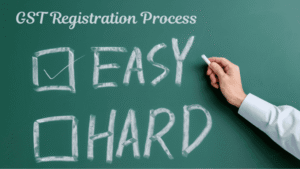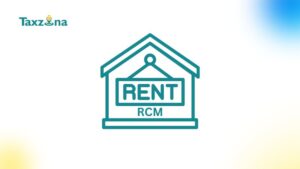Buyers of under-construction homes in India, such as flats, apartments, and bungalows, are subject to a Goods and Services Tax (GST) at the rate of 1% for affordable housing and 5% for non-affordable housing. When investing in real estate, the GST is also due on the purchase of buildable land.
GST on Flat Purchase
In 2022, the Goods and Services Tax (GST) will be charged to those who purchase condos or apartments in India from a developer during the development phase. It is important to remember that if you are purchasing an apartment in a project that has already been finished, you will not be required to pay GST filing in Mumbai.
A project is considered finished from a legal standpoint once it has been issued a certificate of completion by the appropriate government agency.
Recommended: What is GST Return, File GST Returns Online & Types of GSTR ?
GST Rate on Flat Purchase 2022
Property Type | GST Rate Till March 2019 | GST Rate From April 2019 |
Affordable housing* | 8% with ITC | 1% without ITC |
Non-affordable housing | 12% with ITC | 5% without ITC |
All future construction must comply with the new tax rate without input tax credit (ITC), but builders were given the opportunity to choose between the old and new rates for ongoing projects until May 20, 2019. All projects must have been unfinished as of March 31, 2019, to qualify for this promotion.
Taxes Before GST Implementation
Before the introduction of the Goods and Services Tax (GST) in 2017, many state and central taxes were levied on buildings at different points in the construction process. Although these levies made it more expensive for developers to get a project off the ground, builders could not deduct them from their production tax.
Before the GST was implemented in Australia, real estate developers had to pay taxes such as:
- Value Added Tax (VAT)
- Central Excise
- Entry Tax
- LBT
- Octroi
- Service Tax, etc.
Developers passed the bill for these levies onto the final homeowner. It was also possible for developers to inflate prices by manipulating numbers due to the ambiguity surrounding the rate applicability of the various taxes.
It used to be difficult for the average buyer to learn the rates of value-added tax, central excise tax, entry tax, land value tax, local business tax, octroi, and service tax that applied to a given property development.
After GST Implementation
The Goods and Services Tax (GST) was implemented in India on July 1, 2017 and was billed as the country’s most significant tax reform since independence.
There were previously many different indirect taxes, but the GST unified them all into a single, simpler system. Several adjustments have been made to the GST tax bracket that applies to real estate since its inception.
Types of central and state taxes that GST subsumed
When the GST was officially implemented in July 2017, it replaced the following types of federal and state taxes:
Central Taxes
- Excise Duty
- Customs Duty
- Special Additional Duty of Customs
- Service Tax
- Central Sales Tax
- Central surcharge and cess on supply of goods and services
State Taxes
- State Value Added Tax
- Entertainment Tax
- Luxury Tax
- State Excise Duty
- State surcharge and cess on supply of goods and services
- Taxes on advertisement
- Purchase tax
- Taxes on lotteries, gambling and betting
What is Affordable Housing as per GST?
Affordable housing is defined by the government as dwellings that cost no more than Rs 45 lakhs. However, in order to be considered low-cost housing, the unit must meet a number of size requirements. To be considered an inexpensive home in a major city, a property must cost no more than Rs 45 lakhs and must be no smaller than 60 square metres in size (carpet area). {Pro Tip: Reverse Charge Mechanism Under GST – A Simple Guide to All Aspects}
Greater metropolitan areas include the National Capital Region of Delhi, Bengaluru, Chennai, Hyderabad, the Mumbai Metropolitan Area, and Kolkata. In India, outside of the above-mentioned cities, a house is considered reasonable if it costs no more than Rs 45 lakhs and has no more than 90 square metres of carpet area.
What is Input Tax Credit (ITC) Under GST?
The ITC system is one of the many ways in which the GST law stands out from India’s previous tax regime. A real estate developer incurs repeated tax payments on purchases of materials and labour from the outset of a home project all the way until its conclusion. To offset the cost of paying output tax, the GST system allows the builder to claim a credit for input taxes.
Example:
A developer must pay a 25,000 ($600) tax on his finished product. Input tax of Rs 21,000 was paid by the contractor on the purchase of steel, cement, paint, etc. After taking into account the input tax credit, his total output tax liability would be reduced to Rs 4,000.
GST Calculation on Affordable Property
Below, we compare the pre- and post-April 1 GST calculation methods for purchasing affordable housing segment flats.
Affordable housing | GST on affordable housing before April 1, 2019 | GST on affordable housing after April 1, 2019 |
Property cost per sq ft | Rs 3,500 | Rs 3,500 |
GST rate on flat purchase | 8% | 1% |
GST | Rs 280 | Rs 35 |
ITC benefit for material cost of Rs 1,500 at 18% | Rs 270 | Not applicable |
Total | Rs 3,510 | Rs 3,553 |
Impact of GST on Luxury Property
Compared to before, purchasers of high-end real estate will now have more financial flexibility thanks to the revised GST rates. A look at the GST figures for a high-end apartment purchase:
Luxury housing | Before April 1, 2019 | After April 1, 2019 |
Property cost per sq ft | Rs 7,000 | Rs 7,000 |
GST rate on flat purchase | 12% | 5% |
GST | Rs 840 | Rs 350 |
ITC benefit for material cost of Rs 13,000 at an average of 15% | Rs 126 | Not applicable |
Total | Rs 7,714 | Rs 7,350 |
GST on Government Housing Schemes
The government has made it clear that under the new regime, the GST on government-led mega housing projects for the common man will be capped at 1%.
The Jawaharlal Nehru National Urban Renewal Mission, the Rajiv Awas Yojana, the Pradhan Mantri Awas Yojana, and housing schemes by individual state governments are all examples of such housing plans.
GST on Construction Services
Despite the fact that the Indian real estate market is excluded from the ambit of the GST regime, several aspects of the industry are subject to taxation under the new rules. Specifically, under India’s Goods and Services Tax (GST) system, the following rates apply to construction-related ancillary services:
Under-construction home bought under the PMAY Credit-Linked Subsidy Scheme (CLSS) | 8% |
Under-construction home bought without the subsidy | 12% |
Works contract for affordable housing | 12% |
GST Rate on Construction and Building Materials
In India, real estate is subject to the Goods and Services Tax (GST) through construction contracts and the construction and constitution of buildings and constitutions, as all materials used in the development process are subject to GST.
For the most part, the new rules apply to the Indian construction industry, which has long been subject to high tax rates thanks to a complex web of levies on the acquisition of a wide range of building construction materials.
GST on Maintenance Charges For Housing Societies
Owners of flats who pay more than Rs 7,500 annually in maintenance fees to their housing society must pay GST at the rate of 18% on their residential property. Each housing society or RWA that charges its residents more than Rs 7,500 per month must also pay an additional 18% in tax on the money they receive.
However, the GST is not required to be paid by housing societies with an annual revenue of less than Rs 20 lakhs. Both the RWA’s annual turnover must be over Rs 20 lakhs and the maintenance charge per member must be greater than Rs 7,500 per month for GST to apply.
For payments greater than Rs 7,500 per month per member, the government has made it clear that the full sum is taxable. So, if the monthly maintenance fees are Rs 9,000 per member, the 18% GST on flats will be due on the full Rs 9,000, and not just Rs 1,500. (Rs 9,000-Rs 7,500). Additionally, owners who have more than one apartment in the same housing society will be required to pay taxes on all of their properties individually.
On the other hand, RWAs are eligible to receive ITC for taxes paid on capital purchases (such as generators, water pumps, lawn furniture, etc.), purchases of goods (such as taps, pipes, other sanitary/hardware fittings, etc.), and purchases of input services (such as repair and maintenance services).
GST Rent
When is the tenant liable to pay GST
If a tenant is GST registered and leases a residential unit, they will be required to pay an additional 18% in tax. On July 13, 2022, the GST Council announced that they would be making a change to this.
Individual service providers with an annual income of more than Rs 20 lakh and businesses with an annual income of more than Rs 40 lakh are subject to the new provision and must register for GST.
When the Landlord is Liable to Pay GST
Renting a home out for commercial purposes is considered the provision of a service under the GST framework. If the annual rent amount is more than Rs 20 lakh, the landlord is entitled to an 18% GST rent on residential flats under this regime.
Rental income is subject to GST, so landlords in this situation must register and pay this tax. Rents from commercial real estate are subject to GST at the rate of 18%.
GST on Home Loan
Financial organisations provide numerous’ services’ as part of house loans, despite the fact that the GST is not applicable to the borrower’s repayment of the loan. In light of the fact that these are services, GST becomes relevant. Therefore, the bank will impose GST on the processing cost, technical valuation fee, and legal fee associated with your home loan.
GST fact check: Did you know?
- Under GST, mixed-use developments that include up to 15% commercial space are still classified as residential properties.
- The applicable GST rate for business real estate is 12%.
- Buying a plot will not incur any Goods and Services Tax.
- When purchasing a ready-to-occupy apartment, no GST is required.
- Only if the tenant is a legal entity are landlords required to collect GST.
- It is important to note that GST does not replace stamp duty or registration fees, which must still be paid when acquiring property.
- All of the fees and costs associated with obtaining a house loan from a financial institution, such as the application procedure, legal fees, and more, are subject to GST.
- The Goods and Services Tax (GST) now encompasses a dozen or more levies.
- Ready-to-move-in properties are priced higher by sellers to account for GST.
- Homes in the construction phase are more affordable than completed ones, even after accounting for GST.
You Must Know Facts About GST
GST is not applicable on ready-to-move-in flats; it is applicable on under-construction flats only
The real estate industry is specifically excluded from the scope of the GST. Generally speaking, a property’s tax rate is determined by the type of “work contracts” that are in place. This is why a builder is prohibited from collecting GST from buyers of completed residences.
Once the occupancy certificate has been issued and the property has been deemed complete, it is no longer subject to the terms of the work contract. In a nutshell, homes that are still in the construction phase but have not yet received their OCs will be subject to GST.
It’s also important to note that under the old rules, purchasers of move-in ready properties were also required to pay a service tax.
However, the GST would be included in the final price of the property since it was paid for by the developer/owner. So, even if ready-to-move-in houses are exempt from GST, the buyer will still be responsible for the tax.
GST on one-time maintenance deposit collected by builders
The Gujarat bench of the Authority for Advance Rulings (AAR) ruled that builders must include GST in the one-time maintenance deposit they demand from homebuyers. If the authorities is to be believed, this fee is for the provision of services and is therefore non-refundable. When this amount of money is actually spent in the future on maintenance operations, the AAR states that the GST will be deducted from the maintenance fee.
Remember that before residents’ welfare groups or cooperative housing societies (which eventually take over maintenance from the builder) are formed, most real estate developers collect a one-time maintenance deposit from house buyers. As soon as the RWA and CHS are established, they are fully responsible for maintenance and can establish their own standards for determining maintenance fees. The constructor’s input would be terminated.
This particular responsibility of homebuyers is determined by the square footage of the property; buyers must pay a certain fee per square foot. All of the money collected from buyers as a one-time maintenance fee goes into a general fund and is dispersed from there as needed
Disputes have developed between buyers and developers regarding the applicability of GST on the one-time maintenance payment due to the complete absence of clarity on legislation governing collection of this levy.
Immediately following collection, developers often subtract GST at the rate of 18% before depositing the remainder into the common fund. After the AAR judgement, the whole sum, without GST, must be deposited by the developers.
Before the GST regime was implemented in 2017, construction companies were exempt from collecting service tax on maintenance deposits.
The AAR ruled that while the builder will first charge this fee, RWAs and CHSs might collect the GST from society members as and when the time comes to utilise this amount. From the perspective of the homebuyers, this is essentially just a postponement of the payment.
GST is not applicable on land transactions
Since the sale of land does not entail the transfer of any goods or services, it is likewise exempt from the GST on construction services. For taxable real estate transactions, GST offers a standard abatement of 33% of the entire contract value, towards the value of land, reflecting the importance of land costs in setting property values.
Example: How to calculate GST on under-construction flat
Let’s say a developer sells a buyer an unfinished building for Rs 100. It is estimated that the land value is Rs 33, so the GST on construction will only be applied to Rs 77.
Rate of GST on developable land
If you buy land with the intention of building on it, you won’t have to pay GST. The Central Board of Indirect Taxes and Customs (CBIC) published a circular on August 3, 2022, clarifying that plot sales are exempt from GST regardless of whether or not basic infrastructure has been built. Recently, a similar ruling was issued by the Karnataka Administrative Appeals Tribunal
various state authorities have adopted a different stance in the past. For example, the Madhya Pradesh Appellate Authority of Advance Ruling (AAAR) stated in July 2022 that land sales following development activities will be subject to an 18% Goods and Services Tax (GST). In 2021, the Gujarat Authority of Advance Ruling reached a decision that was similar.
Before the Goods and Services Tax (GST) regime, only direct taxes like stamp duty and registration charges were paid in the sale of immovable assets.
What is Developable Land?
Only parcels for which the owner has already secured the necessary approvals from regional and municipal authorities can be considered developable. As part of the process of future development, the owner must also provide the necessary foundational infrastructure.
When any of the following have been done to the land, it is considered to be suitable for development:
- Demarcation of plot
- Ground levelling
- Boundary wall construction
- Road construction
- Construction of overhead tanks
- Laying work of water pipelines
- Laying work of underground sewerage lines
- Setting up of water harvesting facility
- Setting up of sewage treatments plants
- Development of landscaped gardens
- Setting up of a drainage system
GST on Plot
Similarly, the sale of plots is not subject to the GST regime, but any minor construction on the property would be. In the event of such a sale, GST would be assessed on the remaining two-thirds of the land’s value after a thirty percent exclusion.
GST on sale of developable plots
Although plot sales are not subject to GST, if the underlying piece of land is considered developable, then GST will be applicable.
It was previously accepted that sales of developable property fell beyond the GST’s ambit. However, in a judgement issued in 2016, the Gujarat Authority for Advance Rulings (AAR) clarified that the sale of a developed plot was a “service” and hence taxable under the current regime.
Because real estate transactions are not considered to be the provision of goods or services, they are exempt from CGST under Schedule-III of the CGST Act.
GST applicable on compensation paid to farmers: Karnataka AAR
According to the Karnataka Authority of Advance Ruling (AAR), the remuneration given to farmers who make their land available for the performance of a task is subject to goods and services tax.
The applicant does not meet the criteria to be considered a pure agency, hence the AAR ruled that any reimbursement of land compensation amount provided to farmers and land owners during the execution of work is subject to GST.
GST Impact on Stamp Duty and Registration Charges
After the introduction of the GST regime, there have been periodic calls for the elimination of stamp duty and registration fees, but the government has taken no action in this regard. Because of this, stamp duty and registration fees will likely always be a part of buying or selling property in India.
Stamp duty is typically between 5% and 10%, depending on the state, while the registration fee is typically between 1% and 2% of the property’s value.
GST on Flat Registration
Costs incurred during the registration process are not subject to GST. Do you think that GST will eventually replace stamp duty and registration fees? Experts disagree.
Stamp duty on real estate transactions provides a significant source of income for Indian governments. As it is, the state’s exchequer would take a major hit if the states gave up this revenue. Prabhansu Mishra, a lawyer based in Lucknow, believes this means it’s “very unlikely” that the GST will eventually replace the dual tax system.
GST Real Estate Timeline
2000
The then PM Atal Behari Vajpyee sets up a panel to design a GST model.
2004
The then finance ministry’s advisor Vijay Kelkar recommends that GST replace the existing tax system.
2006
Former finance minister P Chidambaram sets April 2010 as the deadline for GST implementation in his budget speech.
2011
March 22: Government tables 115th Constitution Amendment Bill in the Lok Sabha, to introduce the GST.
2014
December 18: Cabinet approves 122nd Constitution Amendment Bill to GST.
December 19: FM Arun Jaitley introduces the Constitution (122nd) Amendment Bill in the Lok Sabha.
2015
May 6: Lok Sabha passes GST Constitutional Amendment Bill.
May 12: The Amendment Bill is presented in the Rajya Sabha.
2016
September 2: 16 states ratify the GST Bill; President gives assent to the Bill.
September 12: Cabinet clears formation of the GST Council.
September 22-23: The GST Council meets for the first time.
November 3: The Council decides on a four-slab tax structure of 5%, 12%, 18% and 28%, plus additional cess on luxury and sin goods.
2017
July 1: GST is rolled out; 8% rate proposed on under-construction properties.
2019
February 24: Government reduces the GST rate on under-construction property to 5% from 12%, and 1% from 8% on affordable housing.
May: Government gives builders a one-time option to choose between the old GST rate with ITC or new lower GST sans ITC. Those not making a choice are automatically switched to the new regime after May 20.








